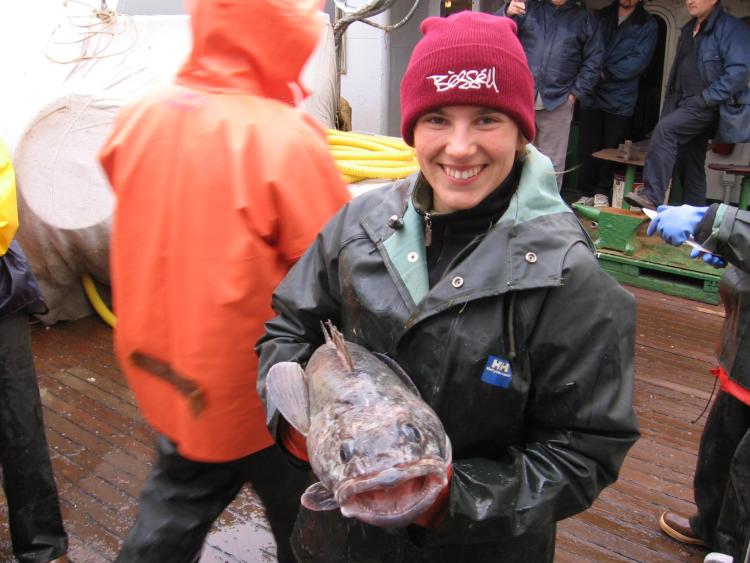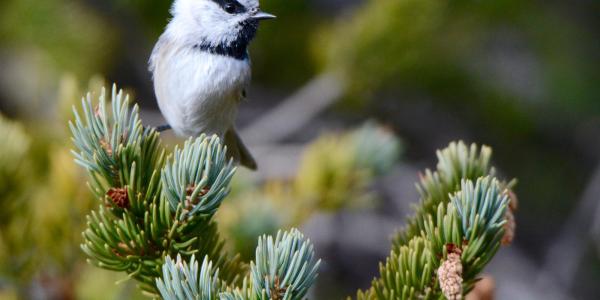After a year of historic wildfires and floods, a global pandemic and unprecedented political unrest, it can be easy to dwell on bad news. But while there is still much work to be done to reduce carbon emissions and pollution, as well as advance environmental justice, much progress has been made since the first Earth Day was organized by Senator Gaylord Nelson and activist Denis Hayes on April 22, 1970—and more progress is in the works.
In celebration of Earth Day’s 51st anniversary, CU Boulder Today explores 10 research-related discoveries that have the potential to positively change the way we live and soften humanity’s imprint on our precious planet.
We can reshape our streets

Reduced vehicle traffic in America’s cities amid the pandemic resulted in cleaner air, and once-busy streets became quiet. Some cities temporarily took urban streets back from cars, prioritizing pedestrians and bicycles. According to Kevin J. Krizek, professor of transport in the programs of Environmental Design and Environmental Studies, this sudden change shows us that there are positive ways that the pandemic could quickly reshape our streets and relationship to cars. Increasing and incentivizing transportation options for cyclists and pedestrians over cars could lead to safer streets and fewer carbon dioxide emissions.
Read: How the COVID-19 pandemic can reshape our streets and relationship to cars; With fewer cars on US streets, now is the time to reinvent roadways and how we use them
Transit is charging ahead
There’s also exciting research advances being made in the realm of electric transit—and not just with the vehicles themselves. ASPIRE—Advancing Sustainability through Powered Infrastructure for Roadway Electrification—is a new center focused on developing infrastructure and systems that facilitate the widespread adoption of electric vehicles. Think electrified highways, optimally placed charging stations, data security and workforce development. CU Boulder will play a major role in this new center, headquartered at Utah State University.
Read: New engineering research center aims to electrify transportation, expand education
Mimicking nature makes for a solid foundation
After water, concrete is the second most consumed material on Earth: 2 tons per person are manufactured each year. The production of cement alone—the powder that is used to make concrete—is responsible for about 8% of global carbon dioxide emissions. What if there was a way to drastically reduce cement and concrete emissions? CU Boulder researchers have discovered that a synthetic molecule based on natural antifreeze proteins minimizes freeze-thaw damage and increases the strength and durability of concrete, improving the longevity of new infrastructure and decreasing carbon emissions. In the face of climate change, Wil Srubar III, assistant professor of civil, environmental and architectural engineering, is creating solutions that will last a lifetime.
Read: 'Nature’s antifreeze' provides formula for more durable concrete
The future is at home

What if your house could power itself even in the coldest of climates at high altitudes? That’s what a team of CU students set out to prove, and in the process, won first place in the 2021 U.S. Department of Energy Solar Decathlon Build Challenge. The CU Boulder “SPARC” house (Sustainability, Performance, Attainability, Resilience and Community) was designed and built to address the housing attainability crisis and construction challenges faced by mountain towns across the country. With its state-of-the-art energy efficiency systems, the SPARC house is already selling energy back to the local power grid—all while temperatures still drop below freezing at night and the new homeowners use it to charge their electric car.
Read: A house run on the sun: How a team of CU students SPARC-ed advances for modern mountain housing; CU Boulder takes first place in 2021 Solar Decathlon Build Challenge
Mountains can mount a comeback
In the mountains west of Boulder, Colorado, a long-term trend of ecological improvement is appearing. Researchers have found that Niwot Ridge—a high alpine area of the Rocky Mountains, east of the Continental Divide—is slowly recovering from increased acidity caused by vehicle emissions in Colorado’s Front Range. This is good news for the wildlife and wildflowers of Rocky Mountain National Park to the north and for water quality in the Front Range. According to Jason Neff, director of the Sustainability Innovation Lab at Colorado (SILC), by controlling vehicle emissions, the places we value in Colorado are returning to how they used to be.
Read: Colorado mountains bouncing back from ‘acid rain’ impacts
What’s common is crucial

The next time you go for a hike, take an extra moment to appreciate the seemingly ordinary life all around you. A house fly, humble yarrow weed and other “generalist” plants and pollinators play a crucial role in maintaining biodiversity and may also serve as buffers against some impacts of climate change, finds new CU Boulder research. Keep a lookout for bumblebees, flies and moths, as well as daisies, roses and lupines: They are all important players in keeping mountain meadows merry and Colorado’s state flower captivating.
Read: Common plants and pollinators act as anchors for ecosystems
Slow and steady can be sustainable
Conventional wisdom suggests that target fishing levels for oceans—set with hopes to maximize harvest while keeping a fishery sustainable—should be approached as quickly as possible to reap benefits immediately. However, researchers say that raising fishing to the same target level a bit more slowly could sustain both a fishery and an ecosystem that would otherwise collapse. This recommendation is based on new award-winning findings that show marine ecosystems are highly sensitive to how quickly a target fishing level is reached. Surprisingly, this pattern in the ecosystem is driven by the social behaviors of individual coral reef fish. These new findings—on not only how many, but how fast fish can be sustainably harvested—can inform local and regional scale management decisions that deal with fishing quotas.
Read: The pace of environmental change can doom or save coral reefs, Research on coral-reef vulnerability wins top recognition
Better predictions improve food security
Ocean acidification is admittedly not good news. But CU Boulder researchers have developed a method that could enable scientists to accurately forecast ocean acidity up to five years in advance. This would enable fisheries and communities that depend on seafood to adapt to changing conditions in real time, improving economic and food security in the next few decades. With this information, fisheries and communities can better plan for where and when to harvest seafood, and to predict potential losses in advance.
Read: Ocean acidification prediction now possible years in advance
We have the power to protect more

The Antarctic region is home to as many as 10,000 species—including whales, seals, penguins, fish, corals and giant Antarctic sea spiders—many of which are found nowhere else in the world. As far as scientists know, none of them have yet gone extinct from climate change or other human actions. But only 5% of the Southern Ocean is protected, leaving biodiversity hotspots exposed to threats from human activity. Cassandra Brooks, assistant professor in the Environmental Studies Program, knows that time is of the essence and has been working to help establish marine protected areas in the Southern Ocean. An international council known as the Convention on the Conservation of Antarctic Marine Living Resources (CCAMLR), made up of 25 countries and the European Union, has the power to soon make these protections a reality.
Read: Marine protection falls short of the 2020 target to safeguard 10% of the world’s oceans. A UN treaty and lessons from Antarctica could help; Humans threaten the Antarctic Peninsula’s fragile ecosystem. A marine protected area is long overdue; More protections needed to safeguard biodiversity in the Southern Ocean
Comedy can help communicate climate change
Did you hear the one about the 16 comedians who walked into a Creative Climate communication course during a global pandemic? No joke. CU Boulder’s Beth Osnes and Max Boykoff note that the Stand Up for Climate Comedy Show, a project to advance creative climate communication, exemplifies what their research on comedy and climate change shows to help people “process negative emotions, feed hope and sustain climate action.” Tune in on April 22, 2021, at 10 a.m. MDT.
Read: Comedians and students joke about climate change. Wait, what?



